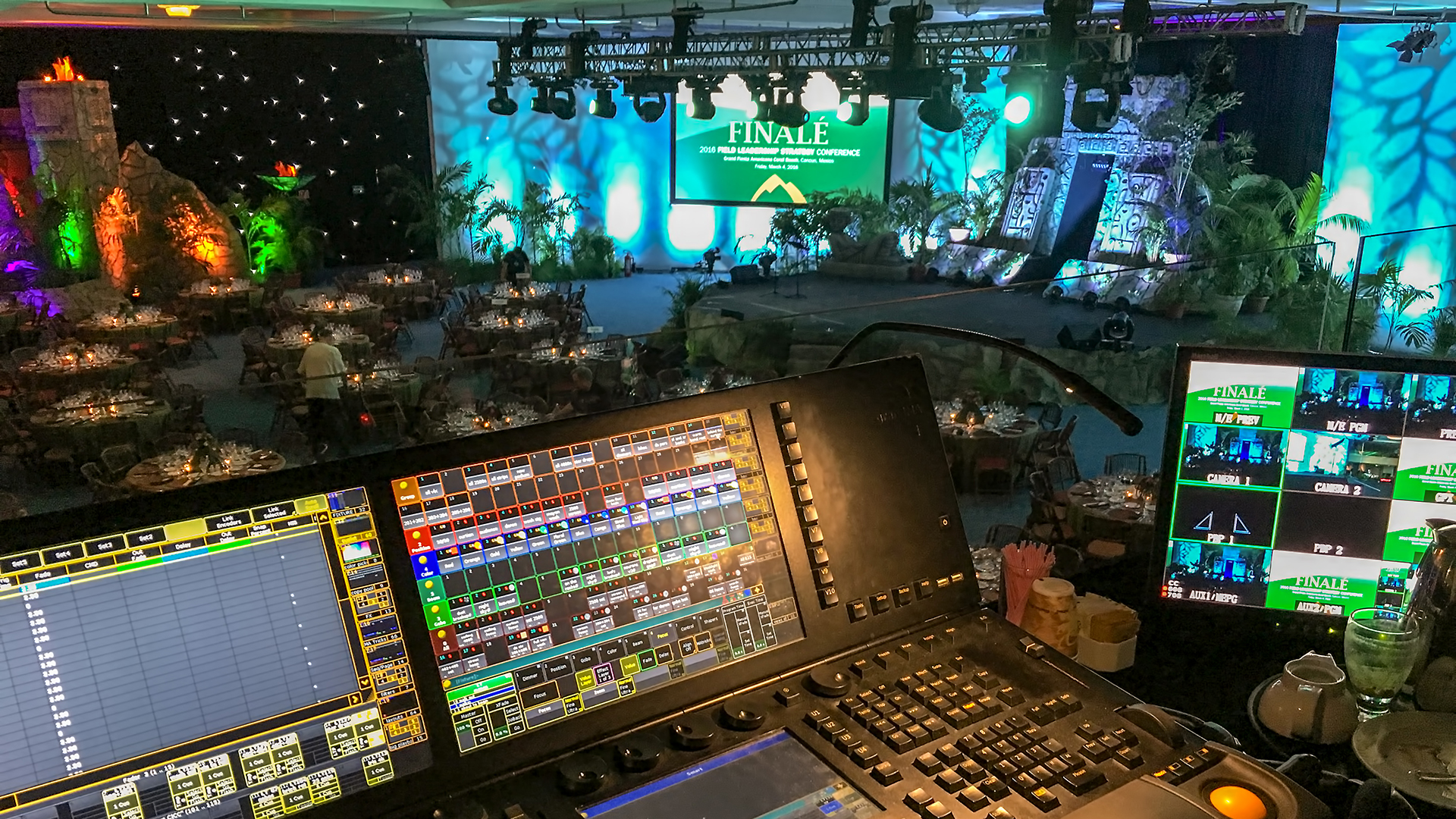February 6, 2020
Conference and Event Lighting: Considerations, Color Schemes & Tips
Point fixture, flip switch, ta-da—Lighting. Hang on, there’s a bit more to the art and science of lights and lighting gear, techniques and design. Let’s begin with some options and definitions:
Key & Fill Lighting — Illuminate the front, from two slightly different directions.
Side Lighting — Add more definition in an unusual way. Strong side light from a single direction can produce dramatic shadows on the floor or walls.
Backlighting — Separates people and things from the background – eliminate it and things recede. Picture your host emerging from a darkened rear stage, stepping into the front lights and picking up her backlight as she steps forward. She literally comes to life.
Downlighting — Heaven-sent lighting from above can wash the stage with a glow, or illuminate tables at a gala without brightening the entire room.
Uplighting — So if Downlighting is heaven-sent than Uplighting must be… ah, it’s unusual and dramatic lighting from below.
How you use these basic lighting techniques defines your event, sets it apart, and makes it brilliantly memorable.
Enlightened Tips
Before you simply point and plug, assess your space and agenda. Think ceiling height, your stage plot, the general room shape and what if any, natural light exists. What type of room is this? The size, color, and components within a room all affect how light travels and reflects.
For lighting, the higher the ceiling, the better. A high ceiling can give you more access to the people on the stage.
An important component to consider is the stage shape, depth, and use. What’s going to be happening on that stage? Is it a speaker at a podium, a discussion panel, a shiny car-of-the-future, a band, a wrestling match (could happen) or other forms of live entertainment?
See the big bright picture and zoom in from there.
Lighting Is Motivation, Emotion, and Theater
Great lighting can create magic, drive emotions, sway moods and enliven the people.
With thoughtful positioning, color, and movement, lighting can bring the thrill, encourage the chill, highlight the heights, and limelight the sights. Every circumstance is unique and requires different lighting schemes and varying levels of intensity.
Think about lighting at a concert. It’s almost as if the lighting puts on its own show. Bright, colorful lights may work well for a hip-hop concert, but not as much for an orchestra. If your event has a theatrical tone to it, you may consider having dramatic lighting, like wall or ceiling washes, to set the scene.
Objects and people on stage and even offstage are shapes that should be considered in a lighting plan. Human faces and bodies, backdrops, props such as tables and chairs, etc. We see shapes because light falls differently on different planes and rounded surfaces. So “basic” lighting techniques can reveal facial or other detailed features or even create the impression of shape, giving dimension to people and everything else on stage.
The Big 3
Color — Lighting is the large box of crayons. By blending different hues, you can match your official colors then play off that by blending colors that complement or provide a contrasting accent.
Variation — Don’t just set it and forget it. Remember that your goal is to create an atmosphere as well as light specific areas or aspects of the event. Use multiple lighting elements (such as uplighting, moving lights) and vary the light levels to create visual interest or dramatic effects.
Creativity — Get that light show out of your head and into the venue. Creativity is as important as the functional side of event lighting. You’ll get the best results by taking a holistic approach. Clever use of just a few lights, combined with making use of and controlling existing room lighting, allows you to light your speaker without washing out her video presentation. You can use various lighting techniques to create an overall effect that is subtle yet powerful.
Step Into The Spotlight
Have a look at this video where Heroic’s Jon and Steve talk through some key information to consider when choosing what type of lighting is most effective and entertaining for your next big show. Thank you for your attention, and in 3, 2, 1, fade to black.




